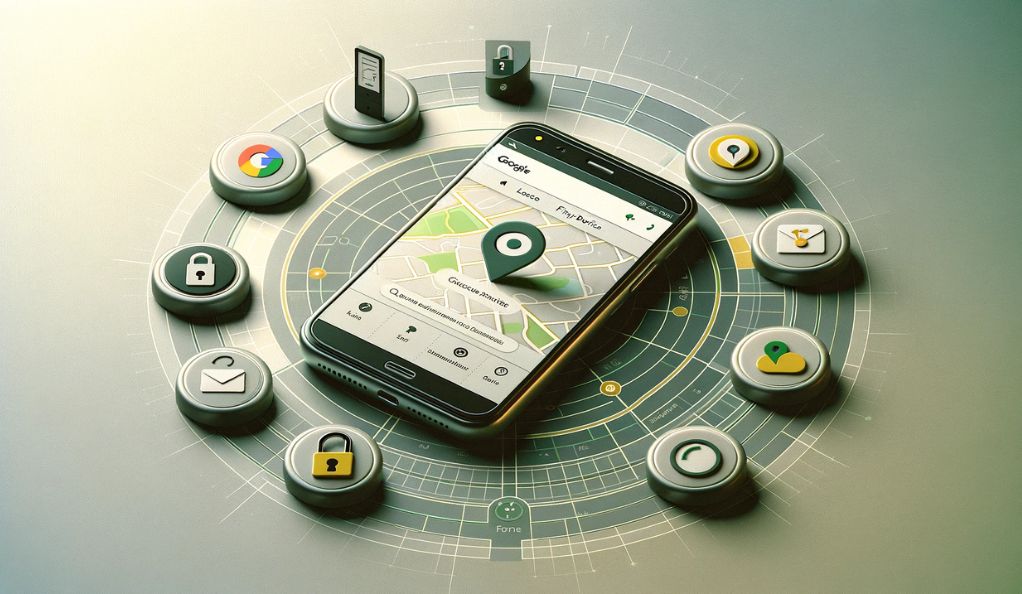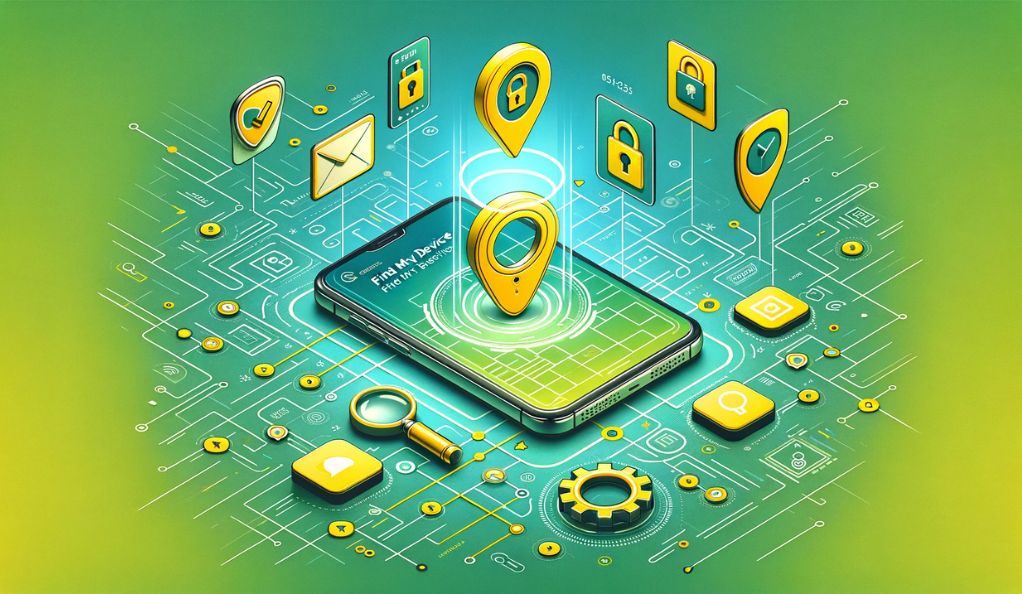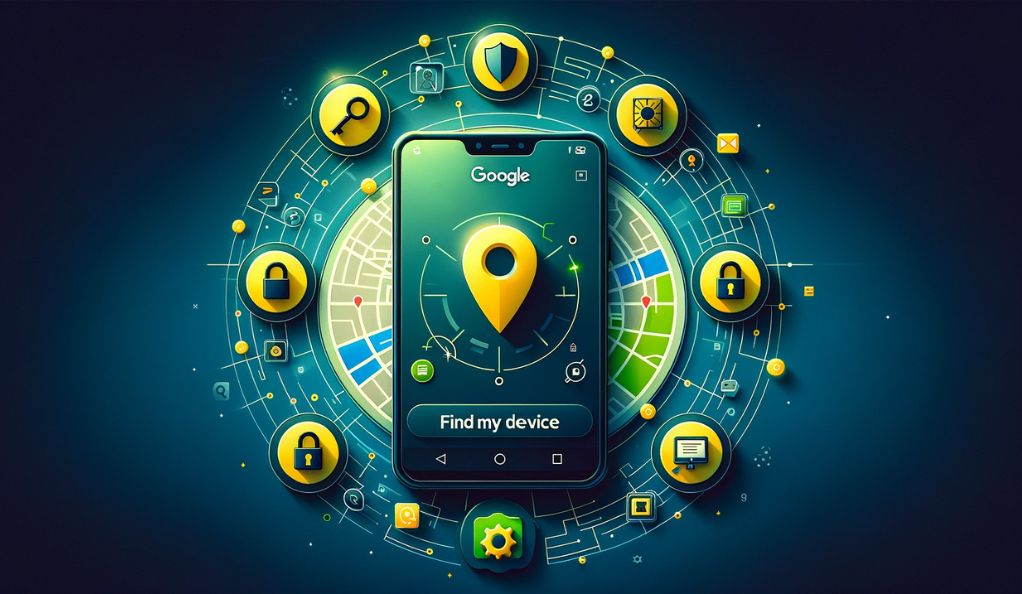Introduction to Google Find My Device
Google Find My Device, initially launched as Android Device Manager, is a powerful tool designed by Google to help Android device users locate and secure their devices in case they get lost or stolen. This service forms a part of Google’s suite of security features, offering peace of mind to users by ensuring their personal data remains protected, even when their device isn’t in their immediate possession.

Evolution of the Service
The service has evolved significantly since its introduction. Initially, it provided basic functionalities like locating and ringing a device. Over time, Google has expanded its capabilities, integrating more sophisticated features to enhance user security. These improvements reflect Google’s commitment to adapting to the ever-changing digital landscape and the growing need for robust mobile security.
How It Works?
Google Find My Device utilizes your device’s location data, which needs to be enabled for the service to function effectively. Once activated, it allows you to access several features remotely via the Find My Device website or app. This includes locating your device on a map, playing a sound on your device to help you find it, locking your device, displaying a message or contact number on the lock screen, and in extreme cases, erasing the data on your device to protect your privacy.
Setting Up Google Find My Device
Activating and configuring Google Find My Device on your Android device is a straightforward process. Here’s a step-by-step guide to ensure your device is ready and secure:
- Sign in to Your Google Account:
- Your Android device must be linked to a Google account. Ensure you’re signed in on your device with your Google account.
- Turn on Location Services:
- Go to your device’s settings.
- Tap on ‘Location’ and turn it on. This is crucial as Find My Device uses location services to track your device.
- Enable Find My Device:
- Navigate to ‘Settings’ on your Android device.
- Scroll down and select ‘Security’.
- Find the ‘Find My Device’ option and toggle it on.
- Ensure Your Device Is Visible on Google Play:
- Visit play.google.com/settings on a web browser.
- Check if your device is listed and visibility is turned on. This helps in accessing your device remotely through Find My Device.
- Check Your Device’s Internet Connection:
- A stable internet connection (Wi-Fi or mobile data) is essential for Find My Device to work correctly. Ensure your device is connected to the internet.
- Review Device Administrator Settings:
- Under ‘Security’ settings, review ‘Device admin apps’.
- Ensure ‘Find My Device’ is listed and activated as a device administrator. This allows it to lock or wipe your device remotely if needed.
- Verify Find My Device Functionality:
- Test the setup by visiting the Find My Device website (android.com/find) or using the Find My Device app from another device.
- Sign in with your Google account and try locating your device on the map.
- Regularly Update Your Device:
- Keep your device’s software updated to ensure you have the latest security features.
By following these steps, your Android device will be configured to use Google Find My Device effectively. Regular checks and updates can ensure that the service remains operational when you need it most.
Remember, while Google Find My Device provides a level of security for your device, it’s also important to practice general digital security measures like using strong passwords and being cautious about the apps you install and the networks you connect to.
The setup process is designed to be user-friendly, catering to both tech-savvy and casual users alike. This ensures that everyone can take advantage of this essential security feature provided by Google.
Features of Google Find My Device
Google Find My Device offers several features that are instrumental in securing and locating lost or stolen Android devices. These features are designed to be intuitive and easy to use, ensuring that even in stressful situations, you can quickly take necessary actions.

Location Tracking Capabilities
- Real-Time Location:
- Once activated, Find My Device can display the real-time location of your device on a map. This is particularly useful if your device is moving or in an unfamiliar area.
- Location History:
- In some cases, if the device is not currently online, Find My Device may show the last known location, helping you trace where your device was last active.
Locking and Resetting Lost Devices
- Remote Lock:
- You can remotely lock your device using Find My Device. This prevents others from accessing your personal data. You can also display a custom message or phone number on the lock screen, so someone who finds your device can contact you.
- Factory Reset:
- As a last resort, if you believe your device will not be recovered, you can remotely perform a factory reset. This will erase all data on the device, protecting your personal information. However, once this is done, Find My Device can no longer locate the device.
Playing Sounds to Locate Devices
- Ringing Your Device:
- If you think your device is nearby but cannot see it, you can use Find My Device to make it ring at maximum volume for 5 minutes, even if it’s set to silent or vibrate. This feature is incredibly useful for finding a device that’s lost in your home or a nearby location.
Each of these features plays a crucial role in the overall security and ease of recovery of your Android device. The ability to track, lock, and even reset a device remotely adds a significant layer of security in case your device is lost or stolen. Moreover, the simplicity and user-friendliness of these features ensure that they can be effectively used by anyone, regardless of their technical expertise.
Enhancements in Device Tracking
Google Find My Device has undergone significant enhancements, especially in the realm of offline tracking and Bluetooth proximity features. These updates have expanded the service’s capabilities, making it more versatile and effective.
Recent Updates Enhancing Offline Tracking
- Offline Device Finding:
- Google has introduced an update allowing the Find My Device network to locate devices even when they are offline. This is particularly useful when a device loses internet connectivity, a common occurrence in lost or stolen device scenarios.
- Use of Crowd-Sourced Data:
- The enhanced service leverages the power of over a billion Android devices. When enabled, other Android devices nearby can detect and report the location of a lost device back to the network, helping in its recovery.
The Role of Bluetooth Proximity in Locating Non-Traditional Devices
- Locating Bluetooth Devices:
- The updates to Find My Device include the ability to track non-traditional devices like headphones, tracker tags, and other Bluetooth-enabled items. This significantly broadens the scope of items that can be secured using Google’s ecosystem.
- Collaboration with Third-Party Device Makers:
- Google has collaborated with manufacturers of popular Bluetooth trackers and accessories. Devices from brands like Tile and others can now be located using the Find My Device network, offering users a unified platform to keep track of various personal items.
- Privacy-Centric Approach:
- Despite these extensive tracking capabilities, Google emphasizes user privacy. Location data sourced from the network is end-to-end encrypted, ensuring no misuse or unauthorized access.
These enhancements not only make Google Find My Device a more powerful tool for locating lost Android devices but also extend its utility to a range of personal items, providing users with a comprehensive solution to safeguard their belongings.
Privacy and Security Aspects of Google Find My Device
Google Find My Device is designed with a strong focus on privacy and security. The following table outlines how Google ensures end-to-end encryption and user privacy, along with the function and significance of unknown tracker alerts.
| Aspect | Details |
|---|---|
| End-to-End Encryption | – Google Find My Device uses end-to-end encryption to protect location data. – This means that location information transmitted across the network is encrypted and can’t be accessed by Google or any third parties. – It ensures that only the user has access to the location of their devices. |
| User Privacy | – Privacy is a cornerstone of Google’s tracking services. – Users have control over their location data and can choose to disable tracking at any time. – Regular privacy audits and compliance with data protection laws add another layer of security. |
| Unknown Tracker Alerts | – This feature is crucial in preventing unwanted tracking. – If your phone detects an unknown tracker like an unfamiliar Bluetooth tag moving with you, it alerts you. – It’s especially useful in identifying potential privacy invasions or tracking attempts by third parties. |
| Manual Scanning for Trackers | – Users can proactively scan for unknown trackers near them. – This manual scanning capability adds an extra layer of security and peace of mind. – It’s particularly useful in crowded or public spaces where the risk of unwanted tracking is higher. |
Google’s approach to privacy and security in Find My Device illustrates its commitment to user safety and data protection. The use of end-to-end encryption ensures that location data remains private and secure, while the unknown tracker alerts provide an essential tool in safeguarding against potential privacy invasions. These features are a testament to Google’s ongoing efforts to balance effective device tracking with stringent privacy standards.
Comparison with Other Device Tracking Services
Google Find My Device and Apple’s Find My iPhone are two leading services in the device tracking and security domain. While they share some similarities, each has unique features that set them apart. The following table provides a brief comparison of these services.
| Feature/Service | Google Find My Device | Apple’s Find My iPhone |
|---|---|---|
| Device Compatibility | – Primarily for Android devices. | – Exclusively for Apple devices (iPhone, iPad, Mac). |
| Location Tracking | – Real-time location tracking. <br> – Can show the last known location. | – Real-time location tracking. <br> – Can show location history. |
| Network-Based Tracking | – Uses a network of Android devices for locating offline devices. | – Uses Apple devices network for locating offline devices. |
| Remote Device Management | – Lock and reset device remotely. <br> – Display message or phone number on lock screen. | – Lock and erase device remotely. <br> – Activation Lock to prevent reactivation without owner’s permission. |
| User Privacy | – End-to-end encryption for location data. <br> – Manual scanning for unknown trackers. | – Encrypted location data and privacy-focused design. |
| Bluetooth Tracking | – Tracks non-traditional Bluetooth devices like headphones, tracker tags. | – Can locate Apple AirTags and supported third-party devices. |
| Cross-Platform Support | – Limited to Android devices and accessible via web. | – Limited to Apple devices but can track friends’ devices across iOS. |
| Additional Features | – Supports tracking a variety of personal items. <br> – Provides unknown tracker alerts. | – Offers “Notify When Found” feature for offline devices. <br> – Integrated with the broader Apple ecosystem for seamless use. |
Google Find My Device’s strength lies in its compatibility with a wide range of Android devices and the ability to track a variety of personal items using Bluetooth technology. Its emphasis on user privacy and security through end-to-end encryption and manual scanning for trackers is notable.
On the other hand, Apple’s Find My iPhone is deeply integrated into the Apple ecosystem, offering features like Activation Lock and the ability to track non-device items like AirTags. Its network-based tracking and the “Notify When Found” feature for offline devices also stand out.
Both services are robust in their offerings, but their effectiveness and suitability can depend on the user’s device ecosystem and specific needs.
Troubleshooting Common Issues with Google Find My Device
When using Google Find My Device, users might face certain issues. The table below addresses common problems, offers solutions, and provides information on contacting support for further help, along with relevant hyperlinks.
| Common Issue | Solution | Contact Support |
|---|---|---|
| Device Not Found | – Ensure the device is powered on and has an internet connection. – Check if location services are enabled. | Google Support Page |
| Location Inaccurate | – Ensure a clear view of the sky for better GPS accuracy. – Use Wi-Fi or mobile networks for improved location accuracy. | Google Help Community |
| Unable to Lock or Erase Device | – Make sure Find My Device has administrator access. – Verify the device’s online status. | Google Account Help |
| Privacy Concerns | – Regularly update your device’s security settings. – Review and manage app permissions for location services. | Google Privacy Help |
| Bluetooth Tracking Issues | – Check that Bluetooth is enabled on your device. – Confirm compatibility of Bluetooth devices with Find My Device. | Google Bluetooth Device Support |
Dealing with problems in Find My Device typically involves verifying the basic settings like internet connectivity, location services, and device administrator permissions. If these initial checks don’t resolve the issue, Google offers several support channels, such as their detailed support pages, community forums, and specialized help sections for account and privacy queries.
For more specific issues or personalized assistance, it’s recommended to contact Google’s support team through these official channels. Keeping your device software updated and routinely checking security settings can also prevent many common issues.
For further troubleshooting and detailed guidance, you can visit the Google Find My Device support page.
Conclusion
In conclusion, Google Find My Device emerges as a formidable ally in the realm of device security and recovery. We began by introducing this indispensable tool, tracing its evolution, and outlining its ease of use. Setting it up proved to be a straightforward process, safeguarding your Android device against loss or theft.
Exploring its features, we uncovered its impressive location tracking capabilities, device locking, and resetting functionalities, and the ingenious sound-playing feature. Recent enhancements expanded its offline tracking prowess and embraced Bluetooth technology for a wider array of devices.
Privacy and security aspects demonstrated Google’s commitment to safeguarding user data through end-to-end encryption and unknown tracker alerts. A comparative analysis with Apple’s Find My iPhone revealed the strengths and unique features of Google’s offering. Finally, we addressed common troubleshooting issues and provided support resources.








